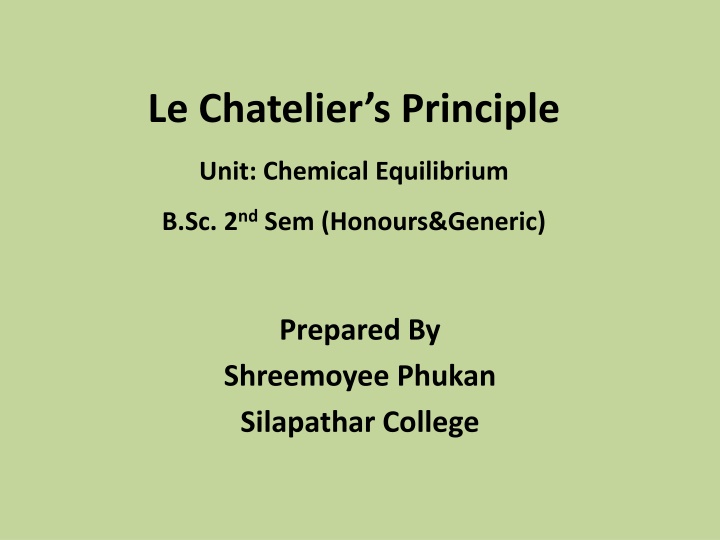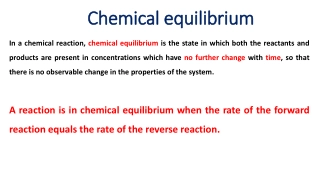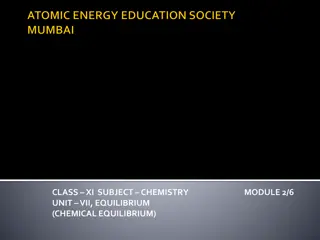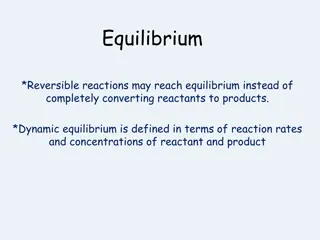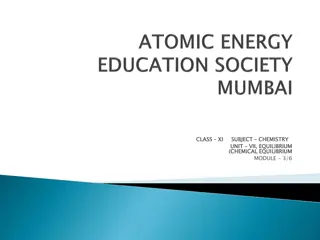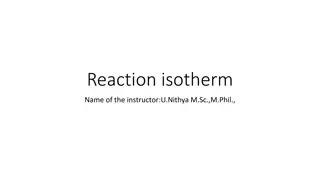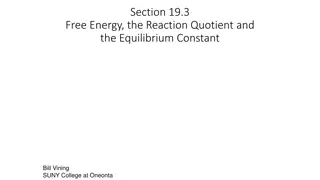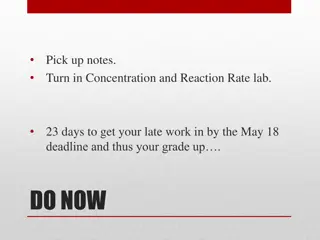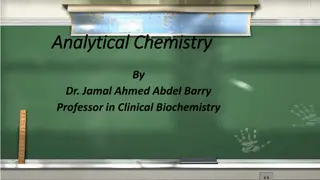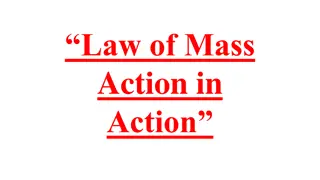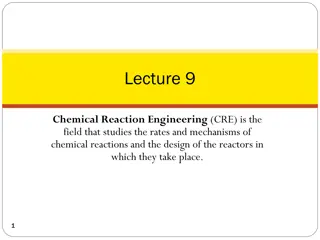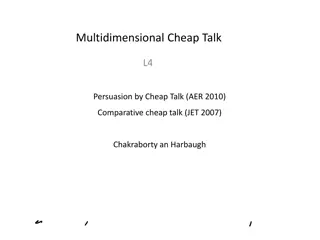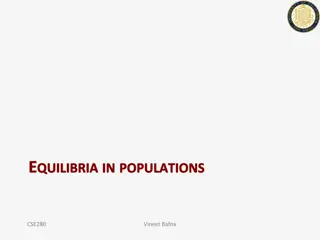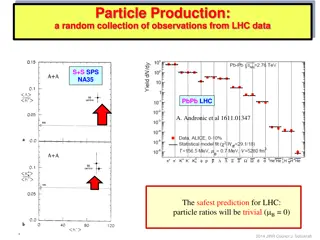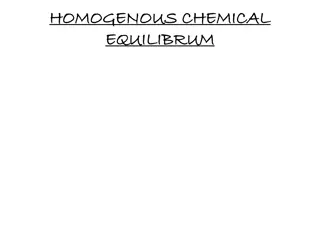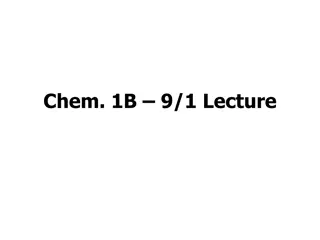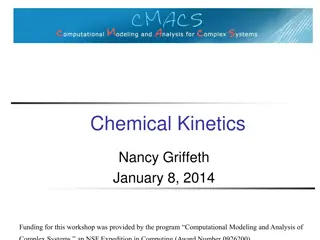Le Chatelier's Principle in Chemical Equilibrium
Chemical equilibrium involves dynamic balance in reactions, disturbed by factors like temperature and pressure. Le Chatelier's Principle predicts changes in equilibrium based on concentration, pressure, and temperature adjustments. Learn how changes in concentration and pressure affect equilibrium in gaseous systems.
Download Presentation

Please find below an Image/Link to download the presentation.
The content on the website is provided AS IS for your information and personal use only. It may not be sold, licensed, or shared on other websites without obtaining consent from the author.If you encounter any issues during the download, it is possible that the publisher has removed the file from their server.
You are allowed to download the files provided on this website for personal or commercial use, subject to the condition that they are used lawfully. All files are the property of their respective owners.
The content on the website is provided AS IS for your information and personal use only. It may not be sold, licensed, or shared on other websites without obtaining consent from the author.
E N D
Presentation Transcript
Le Chateliers Principle Unit: Chemical Equilibrium B.Sc. 2ndSem (Honours&Generic) Prepared By Shreemoyee Phukan Silapathar College
The state of equilibrium is in a dynamic balance between forward and backward reaction. This balance can be disturbed by temperature or pressure. If done so a certain net change occurs in the system. The direction of change can be predicted with the help of Le-Chatelier principle. Le-Chatelier Principles states that when a system in equilibrium is disturbed by a change in concentration, pressure or temperature, a 'net' change occurs in it in a direction that tends to decrease the disturbing factor. changing concentration,
Change in Concentration Consider the state of equilibrium for the formation of ammonia from nitrogen and hydrogen. N2(g) + 3H2(g) 2NH3(g), H = 92.4 kJ/mole The concentration of nitrogen, hydrogen and ammonia become constant at the point of equilibrium. Now if any amount of reactants or ammonia is added or removed their concentration will change and the equilibrium will get disturbed. (i) Increase concentration of reactant : When the concentration of either nitrogen or hydrogen is increased; a net forward reaction will take place which consumes the added reactant. (ii) (ii) Increase in the concentration of any product : If the concentration of product ammonia is increased, a net backward reaction would take place to utilize the added ammonia.
Change in Pressure Change Change in pressure affects equilibrium involving gaseous phase either in a homogeneous or heterogeneous system. Le Chatelier principle for systems involving gases can be studied as follows : (i) When the number of moles of products is more than the total number of moles of reactants as in the following system N2O4(g) 2NO2(g) Increase in total pressure keeping the temperature constant, will cause a decrease in volume. This means that the number of moles per unit volume will increase. A net change will take place in the equilibrium in the direction where the number of moles decrease i.e. backward direction. (ii) When the number of moles of products is less than reactants. As in the following case N2(g) + 3H2(g) 2NH3(g)
According to Le Chatelier's principle increase in total pressure will bring a net change to the equilibrium in the direction where the total number of moles is decreasing i.e. to the product side as ng = 2. Decrease in total pressure will bring the net change to equilibrium in the direction where the total number of moles is increasing i.e. backward direction. (iii) When there is no change in the total number of moles of reactant and product as in the following state of equilibrium. H2(g) + I2(g) 2HI There is no net change in equilibrium state when pressure is changed.
Change of Temperature According to Le Chatelier principle, when the temperature is changed (increased or decreased), the equilibrium system reacts to nullify the change in heat content. However, the net change in equilibrium is directed by the exothermic or endothermic nature of reaction. (i) Exothermic equilibrium : For the following system of equilibrium of exothermic nature : N2(g) + 3H2(g) 2NH3(g); H = 92.4 kJ/mol according to Le Chatelier principle, increase in temperature brings a net change in the equilibrium state in that direction where this extra heat is consumed. The net change is in the backward direction and some ammonia will decompose producing nitrogen and hydrogen. Similarly if the temperature is decreased the equilibrium shifts to the forward direction. (ii) Endothermic equilibrium : N2(g) + O2(g) 2NO(g); H = + 180.7 kJ/mol 1 If the temperature is increased the added heat will be absorbed by the reactant and the net change takes place to the equilibrium in the forward direction. If the temperature in decreased it will bring a 'net' change to equilibrium in the backward direction i.e. direction in which it is exothermic.
Addition of a Catalyst : It does not affect the equilibrium. However it helps to achieve the equilibrium faster. ------------------------------------------
